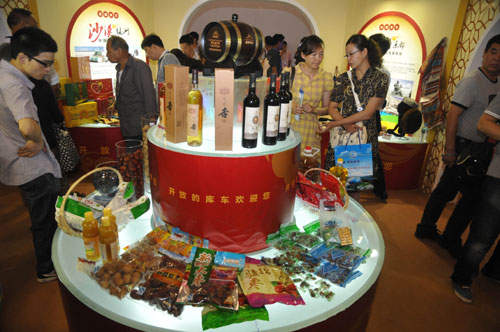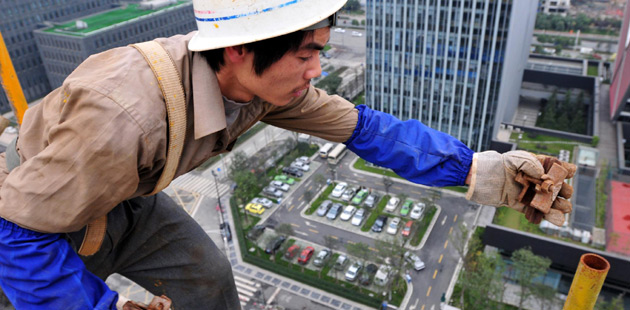Growth reflects region's success
Updated: 2011-12-09 16:26
By Shao Wei (China Daily)
|
|||||||||||
URUMQI - Chen Qiang has a simple formula for doing well in foreign trade.
The general manager of Yema International Group, a leading trading company based in the Xinjiang Uygur autonomous region, said success in the business comes from "continuous reform in accordance with changing markets" and "credibility built upon honest and sustainable business".
|
 |
When speaking of reform, Chen can point to Yema's 19 years of change that transformed it from a small cross-border trading company into a conglomerate with dealings in foreign trade, financing, culture and the capital markets.
"The expansion of our group has mirrored the development of China's relations with Central Asia during the past two decades," Chen said.
The company was established in 1992, when China began establishing ties with the newly independent former Soviet republics of Central Asia. Since then, the company has changed its business strategy several times.
"The complementary economies of China and Central Asia gave birth to dozens of trading companies in Xinjiang in the 1990s, including Yema, Sanbao (Xinjiang Sanbao Industry Group Co Ltd) and Xinjiang Guorui Economic and Trading Co Ltd," Chen said.
Official figures show China's trade with Russia, Kazakhstan, Kyrgyzstan, Tajikistan and Uzbekistan was $86.8 billion in 2010, more than seven times the figure in 2001.
The value of Xinjiang's trade with Central Asia, meanwhile, reached $4.48 billion in the first quarter of 2011, an increase of 65 percent from the same period the previous year.
The value of the autonomous region's trade with Kazakhstan reached $2.7 billion, a 60.3 percent increase from the same period in 2010.
"In the early stages (of Yema's development), we bartered for Chinese daily necessities and groceries using copper, aluminum and steel scrap from Central Asia," Chen said. "Doing this required us to act quickly because the environment changed every minute. We needed to think while we were doing it. It's full of difficulties and variables, but also low profits."
With relations between China and Central Asian countries becoming stronger in the past decade, the group in 2005 turned to exporting mechanical and electrical products, heavy vehicles and equipment.
"Central Asia's economic development is much like China's in the 1980s," Chen said. "Infrastructure construction and foreign investment are in great demand in these countries."
The value of the group's annual exports reached $819 million in 2006, the third-highest among private import-export companies in China and the highest in Xinjiang. Yema has more than 15 branches in Central Asia and Russia.
Yema International set up small-loan companies and a foreign-currency exchange company in 2010, bringing conveniences to foreigners visiting Xinjiang and to Xinjiang-based trading companies.
"The group can't go on without making changes in accordance with Central Asian markets," Chen said. "We have to take the pulse of the market and bring about the integration of trade, finance and culture."
Also important to Yema is credibility built upon honesty and the possession of a sustainable business model.
"Illegal customs clearances used to be rampant in border trades between Xinjiang and Central Asian countries," Chen said. "That's really bad. Bad debts and the absence of legal protection have undone many trading companies in Xinjiang."
Chen said Yema has also tried to improve cross-cultural communication and understanding.
"Every year, our group invites governors and businessmen from foreign countries to visit our headquarters in Urumqi, which allows them to learn more about us and trust us," Chen said.
"Good communication in all ways can provide a solid foundation for sustainable trade and business."
Compared with its dealings with other central Asian countries, especially Kazakhstan, Yema's business with Russia has not been as brisk. Chen said the discrepancy arises from Xinjiang trading companies not always being strong enough to compete with rivals.
Companies from inland Chinese provinces comprise about 95 percent of the trade and business that occurs between China and Russia, while Xinjiang's industries and economy are underdeveloped in comparison.
"But Russia is a market with great opportunities," Chen said. "I predict Russia's economy in 2012 will revive the fastest among the countries bordering Xinjiang. Our group should grasp this opportunity."








